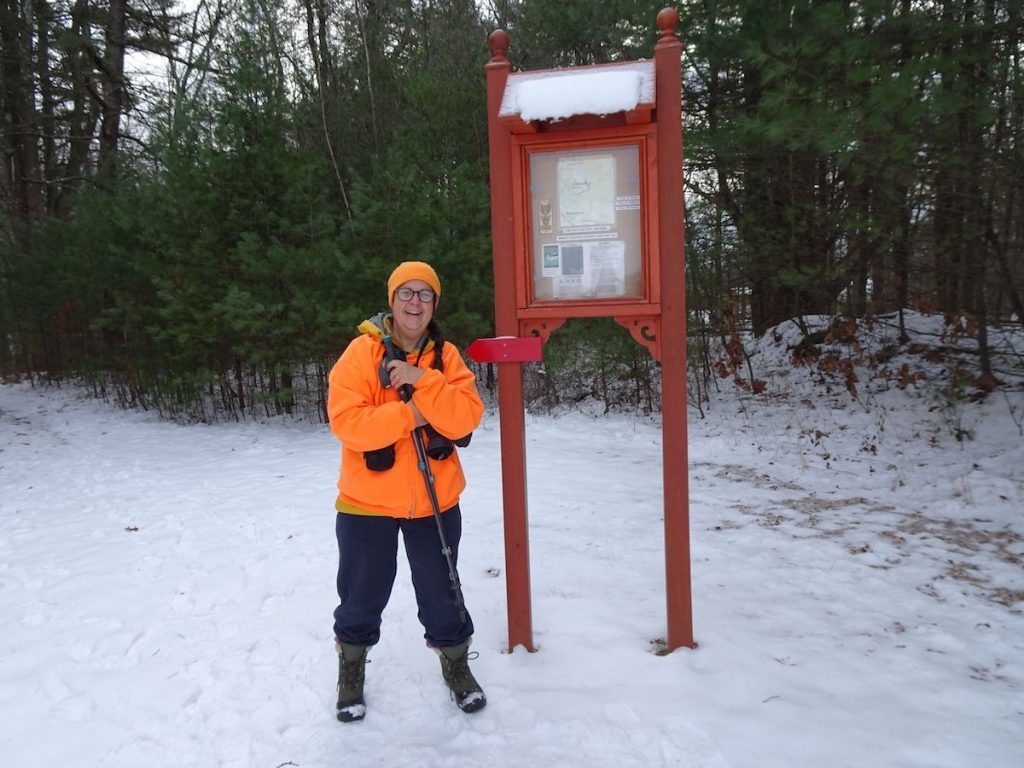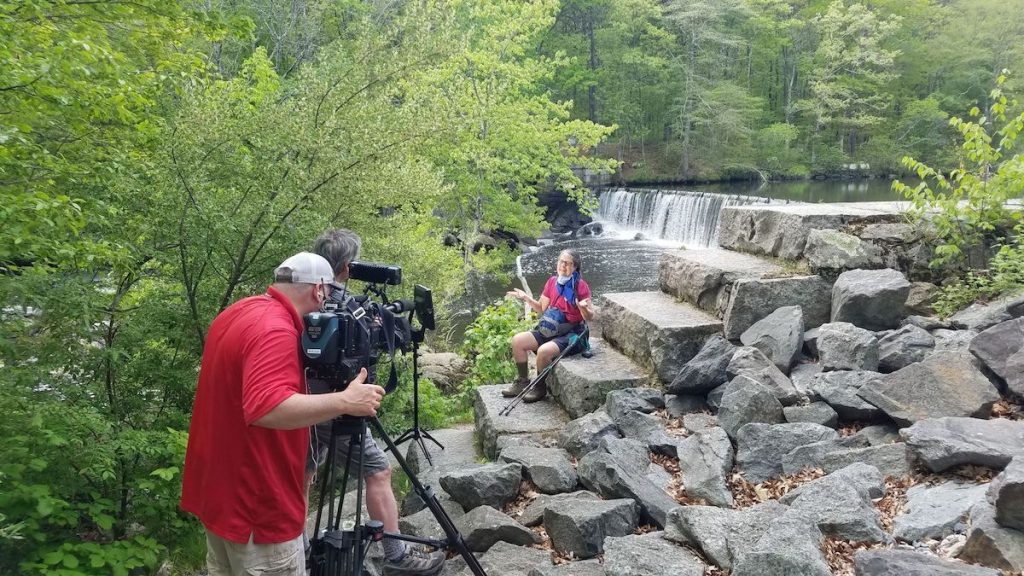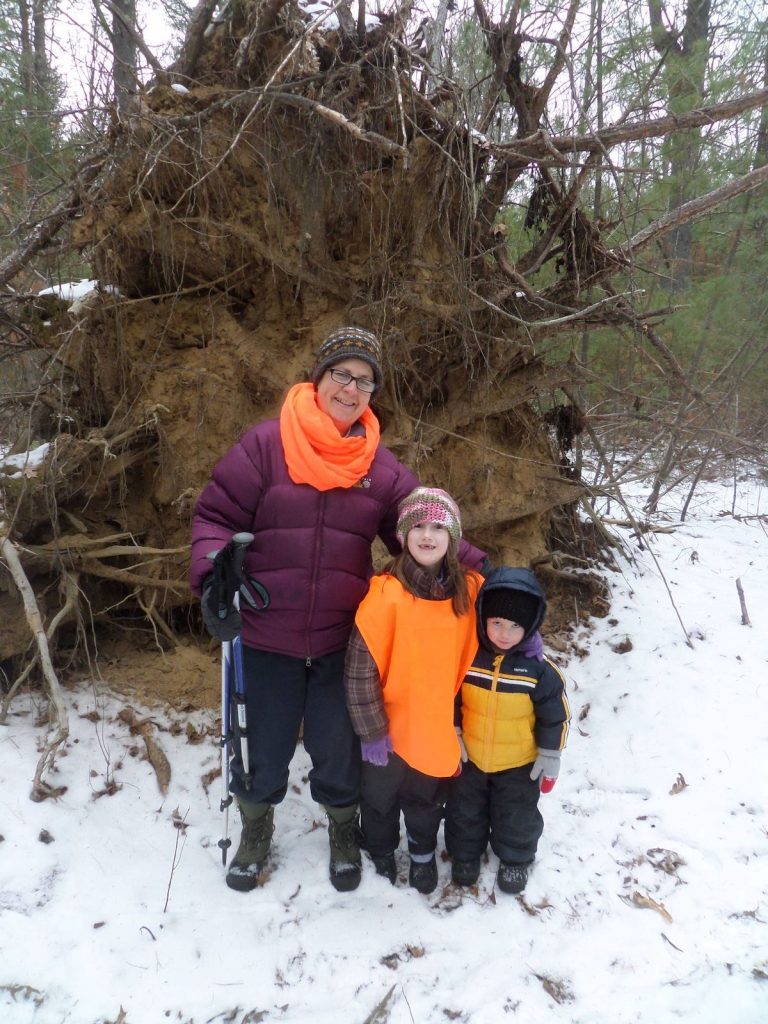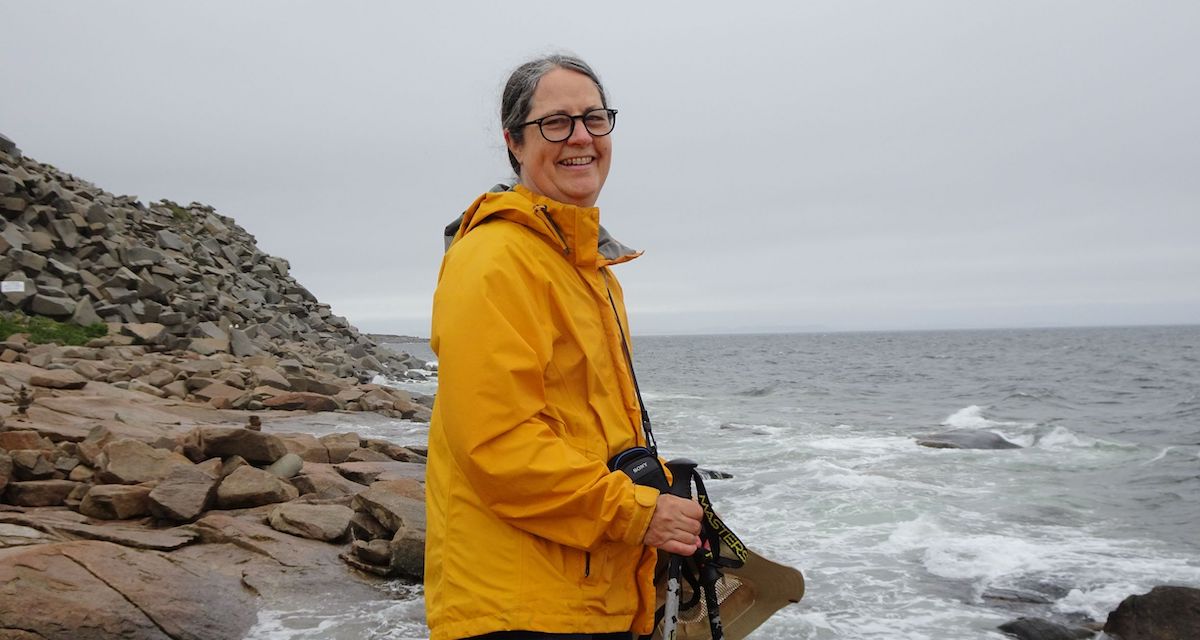A Liturgy of Easy Walks: Spiritual Lessons Learned from Years of Disability
Marjorie Turner Hollman x’77 likes to walk when most people are inside, asleep or far away. She ventures out on rainy and overcast days, visiting trails that bear no signs and have no online reviews. In the summer months, she walks after sunset. She’s not a recluse or a purist or a thrill seeker; she has a disability.
She walks outside at odd hours of the day, in “bad” weather and uncommon places because it means the trails will be less crowded. With a partially paralyzed right leg and two hiking poles, she can take all the time she needs. On unpopulated trails, she doesn’t have to worry about losing her balance when a passerby knocks into her by accident or when the mask slips from her face and she needs a free hand to fix it. At 64 years old, it’s been nearly 28 years since a brain surgery nearly killed her and paralyzed the right side of her body after an operation to remove a tumor.
Yet, it was in being compelled to regain the strength and ability to walk that she realized how special walking was—and still is.
“Walking is a spiritual practice,” says Hollman. “I believe it’s a strong part of what gives me joy. You realize every trail you walk on is maintained by silent partners.”

Even though volunteers and park service employees work hard to maintain public trails, Hollman realized early on how difficult it was to find accessible paths, where people with mobility challenges don’t have to worry about crossing rivers, climbing over fallen trees, tripping on tree roots and loose rocks or navigating steep terrain. So, with the help and support of her second husband Jon, she went out to find hundreds of accessible paths near her home in south-central Massachusetts and wrote two “Easy Walks” trail guides. In August, Hollman published a book, Finding Easy Walks Wherever You Are, which was recently featured in The Boston Globe.
Disabilities Come with Limitations and Benefits
Not only does this book encourage people to opt for less crowded trails in this season of a global pandemic, it reaches a wider audience than one might expect. “My book is not just for people with disabilities,” she says. “I recognize that parents with young children in strollers are also handicapped—as are people who are older, recently injured or who haven’t been as active.”

Hollman’s definition of “handicap” is expansive. It includes parents in the stroller stage, the elderly and the out-of-shape. More than that, her definition acknowledges and affirms that a disability has the power to shape a person’s life in more ways than one. Societies, like our own, tend to emphasize the limitations brought on by a specific disability and ignore the blessings. Through her own journey with disability, Hollman says, “I gained a more generous spirit.”
Empathy Sometimes Comes from Loss
Hollman’s physical limitations have caused great disruptions in her life. After her surgery, she couldn’t drive for seven years. She has never returned to full-time work, even though she is a freelance writer and journalist now. Prior to her surgery, though she was a college graduate, she had cleaned houses for a living because it gave her the flexibility to care for her two young children. In her mid-thirties as a single parent, losing her mobility meant losing her livelihood. “It was very humbling,” says Hollman. “I was reduced to living on welfare to support my children and feed my family.”
When Hollman was well enough to return to work part-time, she got a job at a social service agency where she spent hours of her day signing up families for MassHealth, a federal- and state-run medical insurance program for people with limited income and resources. “I knew how they felt,” she explains. “I knew what it felt like to ask for help and I was finally able to say, ‘I understand. Let me help you.’”
It was her own limitations that inspired empathy for others. “What does it take to get us to put ourselves in another person’s shoes?” poses Hollman. “Sometimes it takes a lot. Maybe I was a tough case. I don’t know.”
Embracing a Slower Pace Brings Curiosity, Contentment and a Sense of Belonging
Hollman’s disability has made it possible for her to imagine the circumstances of others and adopt, quite literally, a slower pace. She moves through the world unhurriedly and routinely, which instills a deep appreciation of where she is in any given moment. She explains, “During those first seven years, when I wasn’t driving at all, my go-to walk was the little dead-end road that takes you along the shore of the lake where I live. I probably walked that road every day, year-round, except when there was ice.” It may not sound exciting to walk the same route hundreds or thousands of times, but to Hollman it’s never boring or repetitive.
“Nature isn’t static,” she says. “One of the chapters in my book is about paying attention to where you are by going on exactly the same walk different times of day, different times of year, when it’s raining, when it’s dark, when it’s early morning.”
When a person does this, they learn nature’s subtle rhythms and feel part of its many transitions.

“In every season I’ve seen the lake,” she says, “with whitecaps from the wind and when it’s frozen solid. I’ve seen the migrating birds come through, stop and then leave come spring and fall. I see the turkeys roost in the trees and point out the little white spots on the ground to my grandchildren and say, ‘That’s where the turkeys were hanging out overnight.’ I see the witch hazel blossom in November. Their tiny beautiful flowers are wonderful surprises in a woodland understory. You have to look for those things. They’re not going to just jump out at you, but that’s the virtue of it.”
To find easy walks of your own, be sure to purchase Hollman’s book Finding Easy Walks Wherever You Are on Amazon.
 The Bell
The Bell